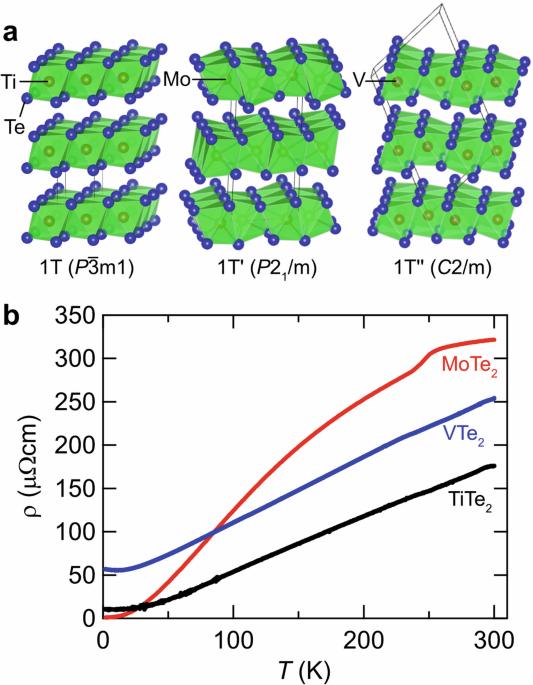Observation of converse flexoelectric effect in topological semimetals
IF 9.6
Q1 MATERIALS SCIENCE, MULTIDISCIPLINARY
引用次数: 0
Abstract
A strong coupling between electric polarization and elastic deformation in solids is an important factor in creating useful electromechanical nanodevices. Such coupling is typically allowed in insulating materials with inversion symmetry breaking as exemplified by the piezoelectric effect in ferroelectric materials. Therefore, materials with metallicity and centrosymmetry have tended to be out of scope in this perspective. Here, we report the observation of giant elastic deformation by the application of an alternating electric current in topological semimetals (V,Mo)Te2, regardless of the centrosymmetry. Considering the crystal and band structures and the asymmetric measurement configurations in addition to the absence of the electromechanical effect in a trivial semimetal TiTe2, the observed effect is discussed in terms of a Berry-phase-derived converse flexoelectric effect in metals. The observation of the flexoelectric effect in topological semimetals paves a way for a new type of nanoscale electromechanical sensors and energy harvesting. A strong coupling between electric polarization and elastic deformation is important for creating electromechanical nanodevices, but such coupling typically requires inversion symmetry breaking and is elusive in metals. Here, a current-induced giant elastic deformation is reported in topological semimetals VTe2 and MoTe2, regardless of centrosymmetry, due to the Berry phase enhancement of the flexoelectric response.

观察拓扑半金属中的反向柔电效应
在固体中,电极化与弹性变形之间的强耦合是制造有用的机电纳米器件的一个重要因素。这种耦合通常在具有反转对称性的绝缘材料中得以实现,铁电材料的压电效应就是一个例子。因此,具有金属性和中心对称性的材料往往不在此研究范围内。在这里,我们报告了在拓扑半金属 (V,Mo)Te2 中观察到的交变电流作用下的巨弹性形变,与中心对称无关。考虑到晶体和带状结构以及非对称测量配置,再加上在微不足道的半金属 TiTe2 中不存在机电效应,观察到的效应将根据金属中贝里相衍生的反向挠电效应进行讨论。在拓扑半金属中观察到的挠电效应为新型纳米级机电传感器和能量收集铺平了道路。电极化与弹性形变之间的强耦合对于创建机电纳米器件非常重要,但这种耦合通常需要反转对称性破坏,在金属中难以实现。这里报告了拓扑半金属 VTe2 和 MoTe2 中电流诱导的巨弹性形变,无论其中心对称性如何,其原因是贝里相增强了柔电响应。
本文章由计算机程序翻译,如有差异,请以英文原文为准。
求助全文
约1分钟内获得全文
求助全文
来源期刊

Communications Materials
MATERIALS SCIENCE, MULTIDISCIPLINARY-
CiteScore
12.10
自引率
1.30%
发文量
85
审稿时长
17 weeks
期刊介绍:
Communications Materials, a selective open access journal within Nature Portfolio, is dedicated to publishing top-tier research, reviews, and commentary across all facets of materials science. The journal showcases significant advancements in specialized research areas, encompassing both fundamental and applied studies. Serving as an open access option for materials sciences, Communications Materials applies less stringent criteria for impact and significance compared to Nature-branded journals, including Nature Communications.
 求助内容:
求助内容: 应助结果提醒方式:
应助结果提醒方式:


